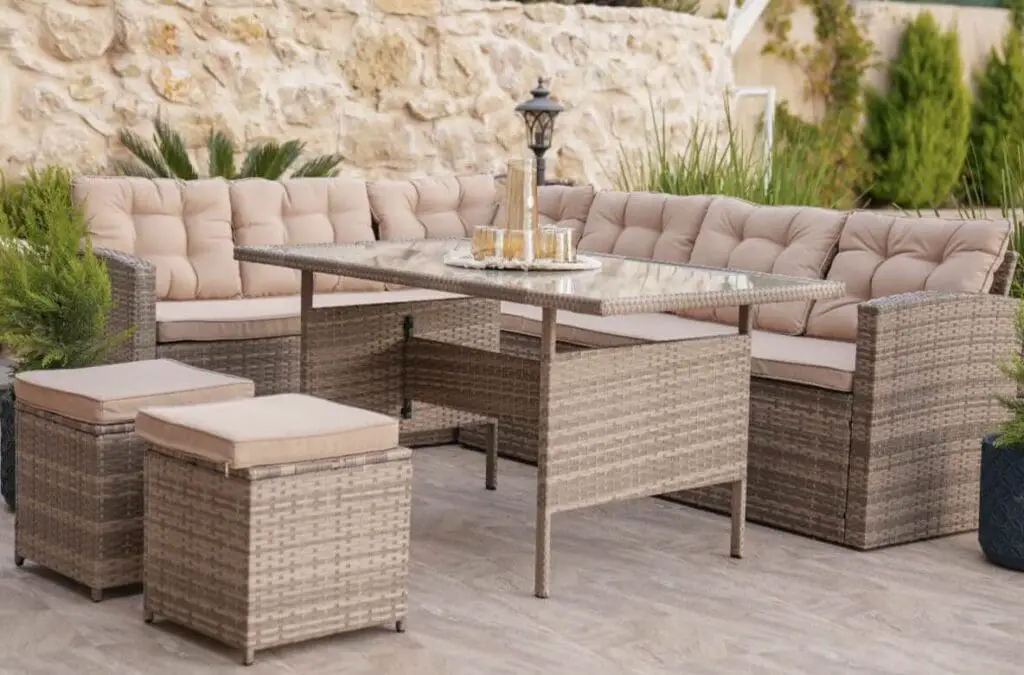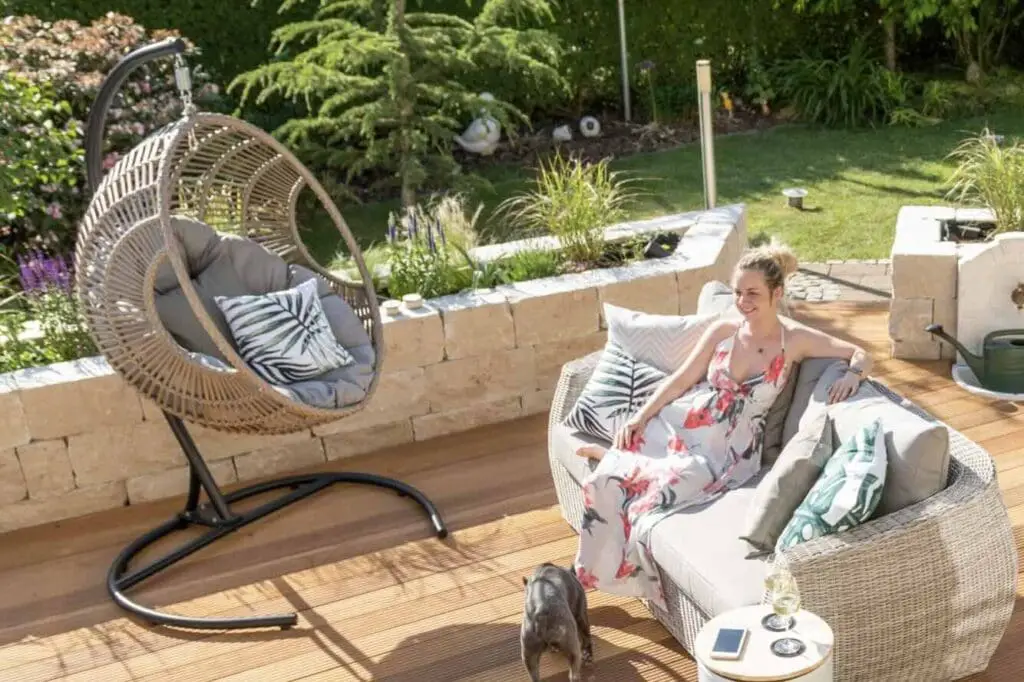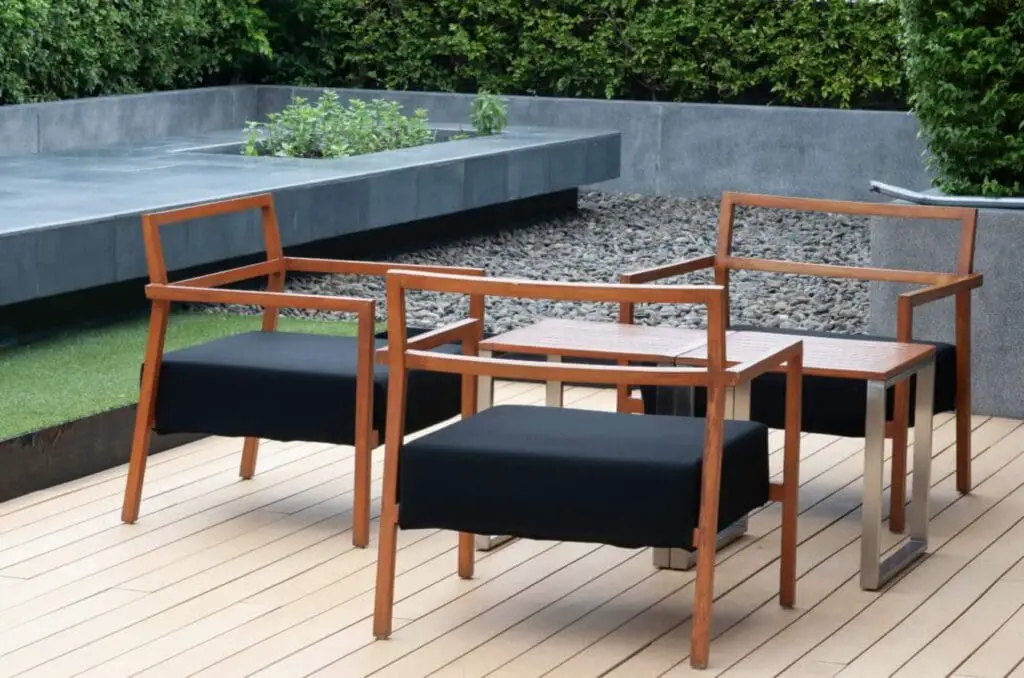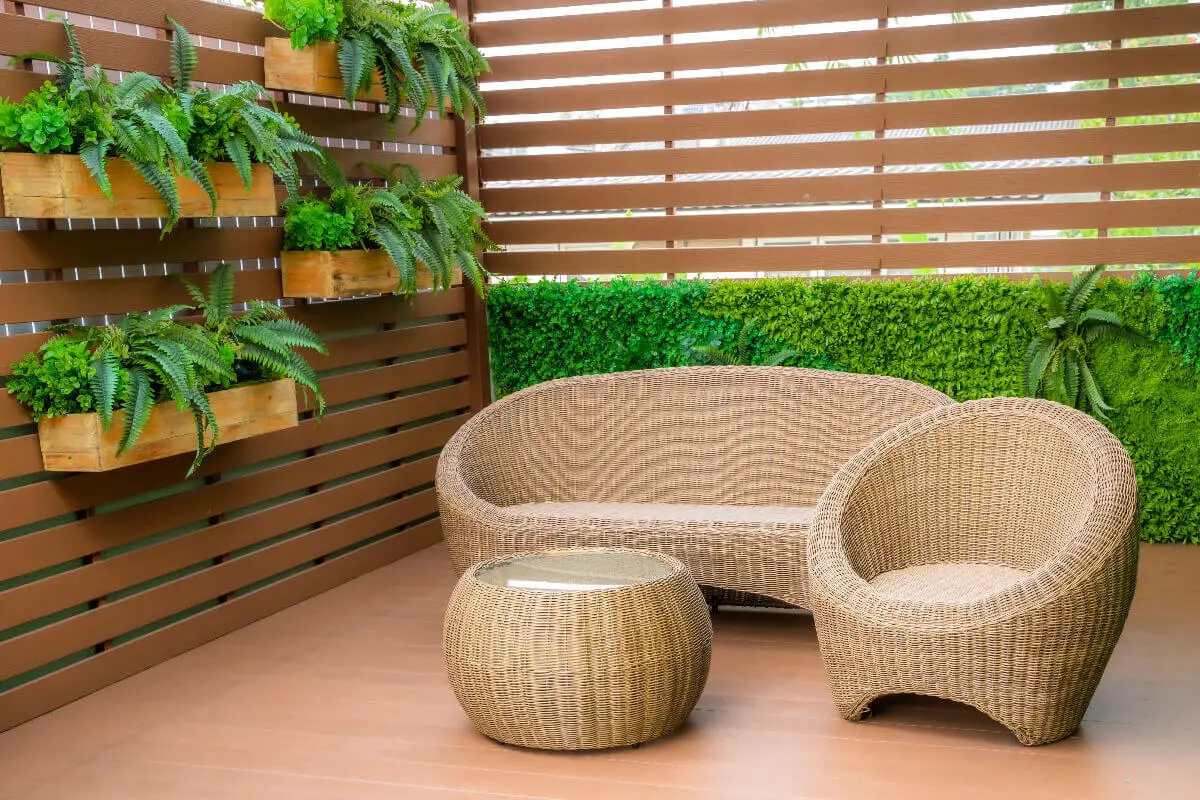Welcome to Mid-Century Modern Design, a timeless classic that continues to fascinate designers and homeowners alike. This essay approaches the significance and application of these design elements in outdoor furniture as testimonials to the aesthetic appeal and functionality these pieces bring to the table.
We delve into the roots from where it all began to what sets this style apart from others, underlining the key designs, the visionaries behind them, and the materials employed. Furthermore, we guide you through carefully selecting the perfect Mid-century outdoor furniture piece for your outdoor space. Finally, we emphasize the care required in preserving these masterpieces, ensuring their durability and appeal are retained for years.
Table of Contents
- Understanding Mid-Century Modern Design
- Choosing Mid-Century Modern Outdoor Furniture
- Preservation and Maintenance of Mid-Century Modern Furniture
- Related Content
Understanding Mid-Century Modern Design
Experience the Essence of Mid-Century Modern Outdoor Furniture
The beauty and allure of mid-century modern design have moved from interior spaces to claim their rightful place in our backyards and patios.
Harmonizing the simple symmetry of iconic design with natural outdoor beauty, mid-century modern outdoor furniture combines functionality and aesthetics in a hidden but powerful way.
Peeling back the layers of this design revolution, one uncovers a style and a philosophy that marries the organic and the artificial.
Unveiling the Mid-Century Modern Design Essence
Emerging from the 1940s to 1970s, mid-century modern design is characterized by its clean lines, gentle organic curves, and a definite love for different materials.
A response to the clunky and exaggerated designs of previous eras, mid-century modern design maintains an emphasis on aesthetics even while celebrating the conveniences of modern living. With creativity at the helm, iconic furniture pieces that reflect this style are designed to appear simple but showcase the designer’s substantial ingenuity.
The mid-century modern design avoids fuss and frills, preferring to accentuate the function rather than camouflaging it. Eero Saarinen, a figurehead of this epoch, prophetically stated, “The undercarriage of chairs and tables in a typical interior makes an ugly, confusing, unrestful world. I wanted to clear up the slum of legs.” True to his words, mid-century modern furniture often features a single pedestal design, entwining elegance and utility.
How Mid-Century Modern Design Influences Outdoor Furniture
Decking out the outdoors in a mid-century modern style translates this design philosophy into an open environment. Outdoor furniture pieces echo the characteristics of indoor counterparts, with warmth, refined lines, and minimal embellishments.
The outdoors provides a playground for designers to experiment with bold colors that are tempered by inherently neutral and natural tones of exterior spaces.
Melting into the Nature: Mid-century modern outdoor furniture utilizes natural materials such as teak or eucalyptus, combining durability with the organic appeal of the natural environment. Through the tapered legs of a garden bench or the smooth surface of a dining table, the design connects the user to nature through views and tactile sensations.
Manifesting natural forms: Not all mid-century modern designs strictly follow straight lines; some venture into softer contours. A fine example is the iconic “Egg Chair,” bringing elements of the natural world into the design aesthetics, enhancing the relationship with the exteriors.
Enhancing functionality: Mid-century modern outdoor furniture often offers multiple usage scenarios, just as Saarinen would have desired. Think of extendable tables, stackable chairs, or furniture pieces that transition from loungers to benches, emblematic of the functional focus.
No matter where one places the accent, it is clear that mid-century modern outdoor furniture transcends mere aesthetics. It brings an experience, a design manifesto, into our yards and balconies, transforming them into meticulously crafted living spaces. As warm seasons are on the horizon, rethinking outdoor spaces with a mid-century modern touch could be the signature move of this year’s home makeover project.
Everyone can bring a splash of history, personality, and class into outdoor living with these timeless furniture designs. Plus, with the growing trend towards sustainability in design, the long-lasting, quality-first mantra of mid-century modern design makes it a worthy investment. Every piece of furniture has a story, and mid-century modern pieces tell a tale of design evolution that’s too compelling to ignore.

Choosing Mid-Century Modern Outdoor Furniture
Delving Deeper: Material Longevity in Outdoor Furniture
The material’s durability is among the most critical points to consider when selecting mid-century modern outdoor furniture. Mid-century modern design holds an intricate balance of form and functionality and extends to the material selection. Sustainable yet robust resources such as eucalyptus, teak, or resin-based renditions of classic designs can weather the storm for outdoor pieces.
Being outdoor furniture, these pieces will undoubtedly face the brunt of weather conditions.
Consider waterproof, rust-resistant, or naturally resilient wood options in this context. Additionally, care should be taken to ensure these materials are treated to resist mold and decay.
Subtlety of Color and Texture
When engaging with mid-century modern design, visuals play a significant role owing to its roots in the post-war art movement. While natural materials contribute to the visual palette, the chosen colors and textures can significantly impact aesthetics.
Mid-century modern outdoor furniture often incorporates soothing, low-saturation colors with occasional pops of vibrant hues, reflecting the era’s optimism. Paying attention to the color balance amidst your plant arrangements, patio, and other outdoor elements will ensure a satisfying design harmony.
Likewise, texture offers another layer of user engagement. Grainy woods, smooth metals, or woven patterns can each provide a rich tactile experience. This can induce a genuine connection with the furniture and, by extension, the natural environment.
The Magic of Versatility
Outdoor living spaces are no longer bound by the strict limitations of a patio set and a grill. The mid-century modern design encourages versatility, blending outdoor relaxation, entertainment, and dining.
Hence, consider how the furniture can serve multiple purposes – an ottoman that doubles as a storage compartment or a stool that can also serve as a plant stand. Versatile pieces maintain the principles of functionality and will likely deliver more value for your investment.
Eco-Friendly Approach
Embracing the core tenet of mid-century modern design – coexistence with nature, the environmental impact should be minimized. Prioritize brands that use sustainably sourced materials and manufacturing processes with little to no detrimental effect on the environment.
Pieces crafted from recycled materials could also be an enticing option, offering meaningful conversation pieces while adhering closely to the ethos of mid-century design.
Remember, choosing mid-century modern outdoor furniture should be an immersive experience – engaging at the nexus of art, design, nature, and practicality. By considering durability, visual aesthetics, functionality, and the ecological footprint, you’re sure to create an outdoor space that looks stunning and tells its own story.

Preservation and Maintenance of Mid-Century Modern Furniture
From Theory to Practice: Keeping Mid-Century Modern Outdoor Furniture Fresh and Durable
Having a solid understanding of the design principles behind mid-century modern outdoor furniture, it’s time to delve further into the practical side. The innovative designs, versatile nature, and sustainability ethos draw us in. But there’s one question every enthusiast should ask: how do we maintain and preserve these functional art pieces?
Protection from the Elements: Covering Up
Start by considering that mid-century modern outdoor furniture was built for indoor and outdoor use. While durable, these pieces require additional care to prolong their lifespan.
The best place to start? Protective coverings. Consider investing in good quality, breathable covers to protect your beloved pieces from the weather while mitigating mold or mildew build-up. Choose covers that ensure a snug fit but allow for sufficient airflow, keeping moisture at bay.
Routine Care and Cleaning: Simplicity is Key
Keeping with mid-century design’s simplicity ethos, caring for your outdoor pieces needn’t be complex. Regular cleaning is crucial to prevent debris from accumulating and potentially damaging the finish.
For wooden pieces, a mild, soapy solution and a soft brush should do the trick; it’s non-abrasive and ensures the color and texture of the wood remain intact. Meanwhile, a standard wet cloth followed by thorough drying should suffice for metal furnishings.
Annual Inspections: Nip Problems in the Bud
A crucial maintenance aspect involves annual inspections at the beginning and end of each season. The objective? Keep a close eye on any signs of rust, decay, or other structural issues that could compromise the integrity of your mid-century modern pieces. Early detection and resolution of these issues preserve the original design and extend the furniture’s lifespan.
Restorative Techniques: Embrace the Art of Refurbishing
Sometimes, despite your best efforts, damage is inevitable. When this happens, embrace it as an opportunity to try your hand at refurbishing. For instance, with wood furniture, sanding, and resealing can work wonders in reinvigorating the original sheen and color.
Similarly, minor touch-ups with rust-resistant paint are an effective solution for metal items. This way, not only do you preserve the piece, but you also participate in the sustainable ethos of mid-century design by minimizing waste.
In Conclusion…
It’s essential to remember that while mid-century modern outdoor furniture embodies simplicity and functionality, its maintenance requires a dedicated, hands-on approach. It’s a fine blend of regular cleaning, annual inspections, and tactical refurbishment.
This ensures your beloved pieces withstand the test of time and continue to resonate with their charming mix of artistic expression and practical usage in your outdoor space.

The Mid-Century Modern design imparts a unique character to your outdoor space, presenting a seamless blend of form and function. Choosing the perfect piece weaves magic into your existing setup, and the correct maintenance preserves this charm intact over time.
Mid-century modern outdoor furniture has survived the test of time and continues to inspire with its inimitable style and enduring trends. So, step into the timeless era of Mid-Century Modern Design, make an informed choice, and let it create an inviting and inspiring outdoor oasis for you and your loved ones.
If you are interested in seeing how Mondoro can help you manufacture high-quality outdoor synthetic rattan furniture – we would love to talk to you to see how we can help you.
At Mondoro, we create, develop and manufacture home decor and home furnishing products.
Find out more about how Mondoro can help you create, develop, and manufacture excellent home decor and home furniture products – don’t hesitate to contact me, Anita. Check out my email by clicking here or become a part of our community and join our newsletter by clicking here.
Mondoro gives out a FREE Lookbook to anyone interested. You can receive a copy of our latest Lookbook by clicking here.
Related Content
Care & Maintenance Of Outdoor Synthetic Rattan Furniture
The care and maintenance of the outdoor synthetic rattan furniture are pretty straightforward. Use mild soap and water and a soft brush to clean your furniture at least once a year. With proper storage, you can be sure to add to the longevity of your outdoor synthetic rattan furniture pieces.
You can learn more by reading Care & Maintenance Of Outdoor Synthetic Rattan Furniture by clicking here.
Expert Tips On Sewing Outdoor Furniture Fabric Cushions
The outdoor fabric should be specified for your outdoor furniture cushions. Sewing an outdoor cushion takes technical skills in cutting the cushion pattern and sewing. The cushion needs foam, a waterproof cover, and an outdoor fabric cushion cover.
You can learn more by reading our blog, Expert Tips On Sewing Outdoor Furniture Fabric Cushions by clicking here.
Buying Guide For Outdoor Furniture Fabrics, What You Need To Know
Your choice of outdoor fabric for your outdoor furniture collection will make a difference in how long the material will last. There are ten key points to consider when making your outdoor fabric selection. Proper maintenance and care will also help expand the fabric’s life cycle.
You can learn more by reading our blog Buying Guide For Outdoor Furniture Fabrics, What You Need To Know by clicking here.


